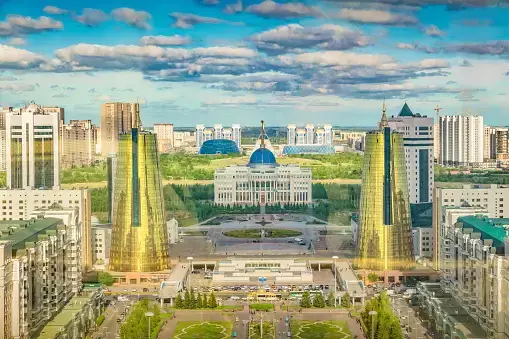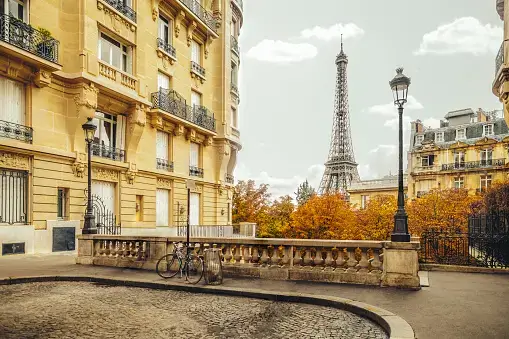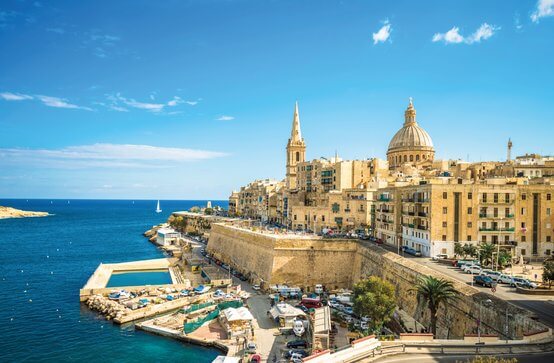10 Historical Buildings in Asia According to Zainab
You can send us your collection by going to ContactUs page.
Please be aware that the content within this list may be updated, modified, or revised in the future. As new information becomes available or circumstances evolve, the items or rankings within the list may be adjusted accordingly.
Note that the collection presented here has been contributed by an individual and every Individual has its own Opinion so it is not an official collection. While we strive to curate and provide high-quality content, the accuracy, completeness, and authenticity of the collection cannot be guaranteed. The views, opinions, and selection of items within this collection solely belong to the user who created it. We encourage you to explore and enjoy the collection with an open mind, understanding that it reflects personal preferences and perspectives. Should you have any questions or concerns, please feel free to reach out to us. Your feedback is valuable as we continuously strive to enhance your browsing experience
Created By: Zainab

Title: Hawa Mahal
Location: Jaipur, Rajasthan, India
Year of Construction: 1799
Description: Hawa Mahal, also known as the "Palace of Winds," is a stunning and iconic architectural marvel located in the heart of Jaipur, the capital city of Rajasthan, India. This magnificent structure was built in 1799 by Maharaja Sawai Pratap Singh, a ruler of the Kachwaha Rajput dynasty, as an extension of the City Palace.
Architectural Style: Hawa Mahal is a unique five-story sandstone palace that features a beautiful blend of Rajput and Mughal architectural styles. The facade is adorned with intricate lattice-like windows and jharokhas (overhanging balconies), which were designed to allow cool breeze to flow through the building during the scorching summers, providing ventilation and keeping the palace cool.
Design and Symbolism: The Hawa Mahal's design resembles the crown of Lord Krishna, which symbolizes devotion and divine connection. The palace's 953 small windows, or "jharokhas," not only serve as a decorative element but also offer a splendid view of the bustling streets below, allowing the royal ladies to observe various festivities and processions without being seen by the public.
Cultural Significance: Hawa Mahal is a significant historical and cultural landmark in Jaipur. It reflects the rich heritage and artistic sensibilities of the Rajput era. The palace stands as a testimony to the grandeur of Rajasthan's architectural heritage and the creativity of its craftsmen.
Tourist Attraction: Today, Hawa Mahal stands as one of Jaipur's most popular tourist attractions, drawing visitors from all over the world. Its unique facade, elaborate detailing, and vibrant colors make it a photographer's delight. Visitors can explore the interior of the palace, which houses a small museum showcasing historical artifacts and exhibits related to Rajasthan's royal history.
Conclusion: Hawa Mahal, with its delicate architecture and historical significance, is a must-visit destination for anyone exploring Jaipur and Rajasthan. Its elegant facade and fascinating history transport visitors to a bygone era, offering a glimpse of the regal lifestyle and architectural brilliance of ancient India.

Title: Ruins of St. Paul's
Location: Macau, China
Year of Construction: Originally built in 1602, the facade remains as ruins after a fire in 1835.
Description: The Ruins of St. Paul's, also known as "Ruínas de São Paulo" in Portuguese, is an iconic historical site located in Macau, China. It is the remains of the Church of Mater Dei, also known as St. Paul's Church, which was originally constructed by the Jesuits in 1602. The church was part of the St. Paul's College, a prominent educational and missionary center during the 16th and 17th centuries.
Architectural Style: The original St. Paul's Church was a magnificent example of Baroque architecture, with a grand stone facade adorned with intricate carvings and statues. The facade was designed by Italian Jesuit Carlo Spinola and featured elements of European and Asian artistic influences, reflecting the cultural exchange between the East and the West.
Historical Significance: The Ruins of St. Paul's is an important symbol of Macau's rich history and its status as a former Portuguese colony. The church and college were instrumental in spreading Christianity and Western knowledge in the region. However, in 1835, a devastating fire destroyed most of the complex, leaving only the iconic facade standing tall as a reminder of its former glory.
Tourist Attraction: Today, the Ruins of St. Paul's is one of Macau's most famous tourist attractions and a UNESCO World Heritage Site. The site attracts visitors from around the world who come to admire the striking facade and learn about Macau's colonial past. The area surrounding the ruins is a popular spot for photography and exploration, offering a glimpse into the city's historical significance.
Spiritual and Cultural Significance: While the interior of the church is no longer intact, the Ruins of St. Paul's remains a place of cultural and spiritual significance for many. Devotees and tourists alike visit the site to pay their respects, light candles, and offer prayers.
Conclusion: The Ruins of St. Paul's stands as a captivating testament to Macau's multicultural history and serves as a poignant reminder of the city's colonial heritage. Its striking facade and historical significance make it a must-visit destination for anyone exploring the unique blend of East and West that Macau has to offer.
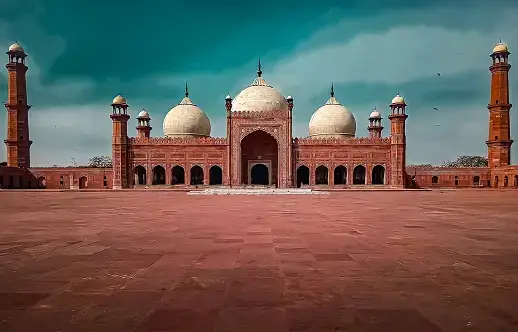
Title: Badshahi Mosque
Location: Lahore, Pakistan
Year of Construction: Completed in 1673 during the Mughal era.
Description: The Badshahi Mosque, meaning the "Imperial Mosque," is a magnificent architectural masterpiece located in Lahore, Pakistan. Commissioned by the Mughal Emperor Aurangzeb and designed by architect Nawab Zain Yar Jang Bahadur, the mosque is an iconic symbol of the Mughal era's grandeur and architectural prowess.
Architectural Style: The Badshahi Mosque is a stunning example of Mughal architecture, characterized by its red sandstone and marble construction. The mosque's imposing structure features four towering minarets, a vast central dome, and multiple smaller domes, creating a harmonious and impressive visual effect. The spacious courtyard can accommodate up to 100,000 worshipers at once.
Historical Significance: The construction of the Badshahi Mosque was a significant political and religious statement by Emperor Aurangzeb, asserting the supremacy of Islam and the Mughal Empire. It was intended to be the largest mosque in the world at the time and served as a symbol of power and opulence.
Cultural Heritage: The Badshahi Mosque holds immense cultural and historical importance for Pakistan. It remains an active place of worship, attracting thousands of Muslims for Friday prayers and religious festivals. Additionally, the mosque has become a popular tourist destination, drawing visitors from around the globe to admire its architectural splendor and historical significance.
Architectural Elements: The mosque's main prayer hall is adorned with intricate calligraphy and ornate floral patterns, showcasing the Mughal love for intricate designs and fine craftsmanship. The use of white marble and red sandstone complements the overall aesthetic, creating a striking visual contrast.
Gardens and Courtyard: The mosque is surrounded by spacious gardens and a vast courtyard, providing a serene and peaceful environment for worshipers and visitors alike. The gardens are a favorite spot for leisure and relaxation, enhancing the overall beauty and tranquility of the site.
Conclusion: The Badshahi Mosque stands as a testament to the architectural brilliance of the Mughal era and remains a source of pride for Pakistanis. Its awe-inspiring design, historical significance, and spiritual atmosphere make it a cultural treasure, attracting both devotees and tourists to experience its grandeur and splendor.
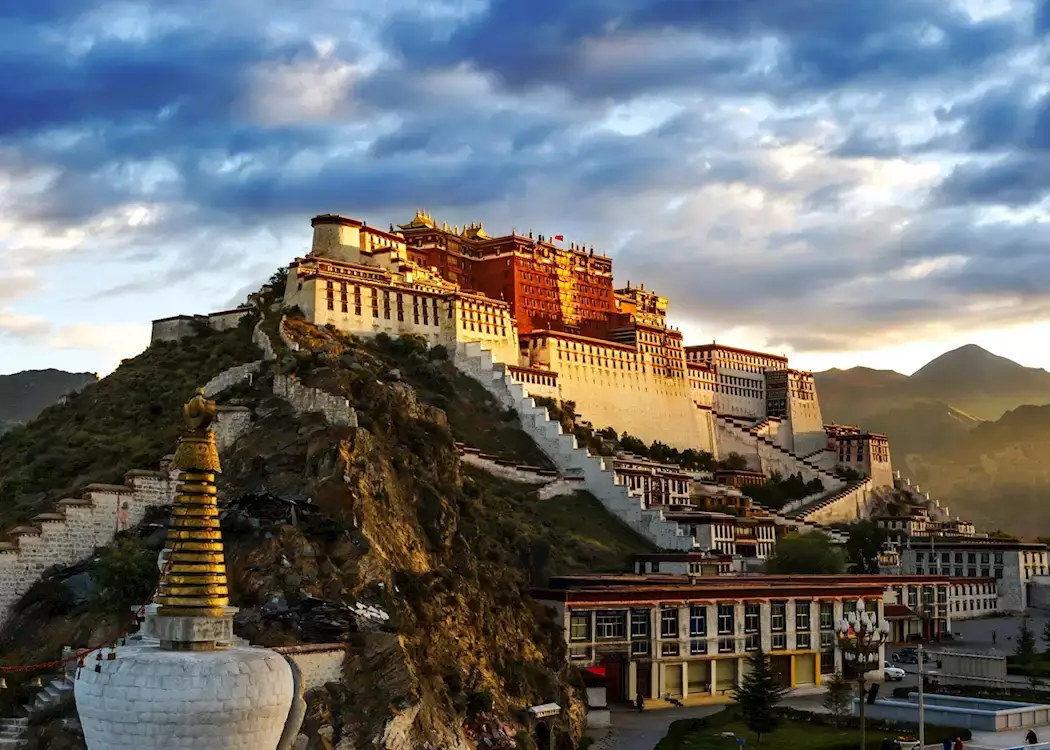
Title: Potala Palace
Location: Lhasa, Tibet Autonomous Region, China
Year of Construction: First built in the 7th century, expanded in the 17th century.
Description: The Potala Palace is an awe-inspiring architectural marvel located in the city of Lhasa, Tibet. It is perched on Marpo Ri Hill, overlooking the city and serving as a symbol of Tibetan Buddhism and its rich cultural heritage.
Architectural Style: The Potala Palace showcases traditional Tibetan architectural style, characterized by its imposing white and red exterior walls, intricate woodwork, and colorful murals. The palace is an exceptional blend of religious, military, and administrative structures, reflecting its historical significance.
Historical Significance: Originally built during the reign of King Songtsen Gampo, the Potala Palace became the winter residence of the Dalai Lama in the 17th century. It served as the political and religious center of Tibet and witnessed numerous significant events in Tibetan history.
Religious Importance: The Potala Palace is regarded as a sacred site for Tibetan Buddhists. It houses numerous chapels, halls, and stupas dedicated to various Buddhist deities and the successive Dalai Lamas. The palace also contains invaluable religious artifacts and scriptures, attracting pilgrims and devotees from all over the world.
Architecture and Layout: The Potala Palace is a towering 13-story structure, standing at an elevation of over 3,700 meters (12,100 feet). It is divided into two main sections: the White Palace and the Red Palace. The White Palace served as the living quarters of the Dalai Lama and the administrative center, while the Red Palace housed religious chambers and sacred relics.
Artistic Richness: Inside the Potala Palace, visitors are greeted with stunning frescoes, intricate murals, and exquisite thangka paintings, showcasing the artistic and cultural achievements of Tibetan craftsmanship.
UNESCO World Heritage Site: The Potala Palace has been recognized as a UNESCO World Heritage Site since 1994, acknowledging its cultural and historical significance to humanity.
Tourist Attraction: The Potala Palace is a major tourist attraction, drawing travelers from across the globe to witness its grandeur, explore its sacred halls, and immerse themselves in the rich Tibetan culture and spirituality.
Conclusion: The Potala Palace is not only an architectural marvel but also a living testament to Tibet's rich history and spiritual heritage. As a revered site for Tibetan Buddhists and a symbol of Tibet's cultural identity, it continues to captivate and inspire visitors with its magnificence and profound religious significance.
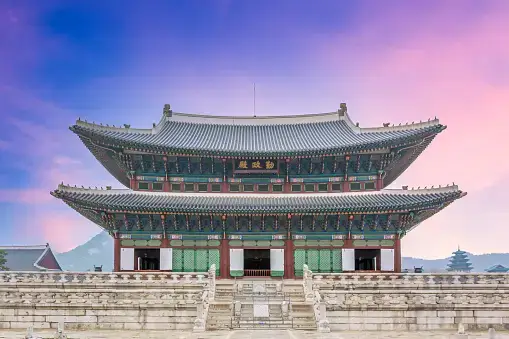
Title: Gyeongbokgung Palace
Location: Seoul, South Korea
Year of Construction: Originally built in 1395, reconstructed in 1867.
Description: Gyeongbokgung Palace, also known as the "Palace of Shining Happiness," is a magnificent historical complex situated in the heart of Seoul, South Korea. It stands as a symbol of the nation's rich cultural heritage and has been a witness to various chapters of Korean history.
Architectural Style: The palace showcases classic Korean architecture, characterized by its colorful wooden structures, sweeping tiled roofs, and intricately designed gates. The buildings are meticulously arranged to align with the principles of Korean feng shui, creating a harmonious and aesthetically pleasing environment.
Historical Significance: Originally constructed during the Joseon Dynasty, Gyeongbokgung Palace served as the main royal residence and the seat of power for several kings. It was the center of political, administrative, and cultural affairs during the dynasty's rule.
Renovation and Restoration: Gyeongbokgung Palace underwent significant renovations over the centuries, with some buildings reconstructed in the 19th century after being destroyed during wars. Today, it stands as an exemplary showcase of Korean traditional architecture.
Royal Ceremonies and Events: Throughout its history, the palace witnessed various royal ceremonies, including coronations, weddings, and state banquets, further highlighting its importance in Korean monarchy and culture.
Main Buildings: The palace complex comprises numerous halls, pavilions, and gates, each with its unique significance. Some of the prominent structures include Geunjeongjeon Hall (Throne Hall), Gyeonghoeru Pavilion (Royal Banquet Hall), and Gwanghwamun Gate (Main Gate).
National Treasure: Gyeongbokgung Palace is a designated South Korean national treasure, symbolizing the nation's pride in preserving its cultural heritage and historical legacy.
Changing of the Guard Ceremony: Visitors to Gyeongbokgung Palace can experience the "Changing of the Guard Ceremony," a reenactment of the royal guard changing shift, showcasing traditional costumes and military etiquette.
Cultural Events and Festivals: The palace hosts various cultural events and festivals, allowing visitors to experience traditional Korean performances, arts, crafts, and cuisine.
Tourist Attraction: Gyeongbokgung Palace is a popular tourist destination, attracting both local and international visitors who seek to immerse themselves in Korea's vibrant history and enjoy the serene beauty of the palace grounds.
Conclusion: Gyeongbokgung Palace stands as a testament to Korea's rich history, culture, and architectural prowess. With its grand structures, beautiful gardens, and historical significance, it continues to be a source of pride for the nation and a captivating destination for travelers eager to explore Korea's royal heritage.

Title: Sheikh Zayed Grand Mosque
Location: Abu Dhabi, United Arab Emirates
Year of Construction: Completed in 2007
Description: The Sheikh Zayed Grand Mosque is a majestic and iconic religious landmark located in the heart of Abu Dhabi, the capital city of the United Arab Emirates. It is named after the UAE's founding father and first president, Sheikh Zayed bin Sultan Al Nahyan, whose vision was to create a grand mosque that reflects Islamic art and culture while promoting tolerance and understanding among different cultures and religions.
Architectural Splendor: The mosque is an architectural masterpiece that blends Islamic, Moorish, and Mughal design elements, featuring intricate carvings, exquisite marble work, and splendid domes. The pristine white exterior and stunning reflective pools surrounding the mosque create a mesmerizing sight, especially during the evening when it is beautifully illuminated.
Capacity and Dimensions: With a capacity to accommodate over 40,000 worshippers, the Sheikh Zayed Grand Mosque is one of the largest mosques in the world. Its main prayer hall boasts the world's largest hand-knotted carpet, crafted by skilled artisans using traditional techniques.
Material and Design: The mosque's construction utilized a mix of natural materials, including marble, gold, and semi-precious stones, giving it a regal and opulent appearance. The unique design blends Islamic calligraphy, floral patterns, and intricate geometric motifs, portraying the grandeur of Islamic architecture.
Spiritual and Cultural Significance: As a place of worship and cultural landmark, the mosque symbolizes the UAE's commitment to its Islamic heritage while embracing global diversity. It serves as a symbol of unity, promoting interfaith dialogue, and welcoming visitors from all walks of life to learn about Islam's rich traditions and teachings.
Openness to All: The Sheikh Zayed Grand Mosque is open to both Muslims and non-Muslims, making it an inclusive and welcoming place for visitors of all backgrounds. Guided tours are available for tourists, providing insights into Islamic customs and the mosque's architectural splendor.
Events and Festivals: The mosque hosts various religious and cultural events throughout the year, including the celebration of Eid, the Holy Month of Ramadan, and other Islamic festivities, attracting both locals and tourists alike.
Tourist Attraction: A major tourist attraction in Abu Dhabi, the Sheikh Zayed Grand Mosque attracts millions of visitors annually, making it one of the most visited landmarks in the world. Its grandeur and spiritual aura leave a lasting impression on all who have the opportunity to visit.
Conclusion: The Sheikh Zayed Grand Mosque is not only an architectural marvel but also a symbol of the UAE's commitment to preserving its Islamic heritage and promoting cultural understanding. It stands as a testament to the vision of its namesake and continues to be a source of inspiration and spiritual enlightenment for people from all corners of the globe.
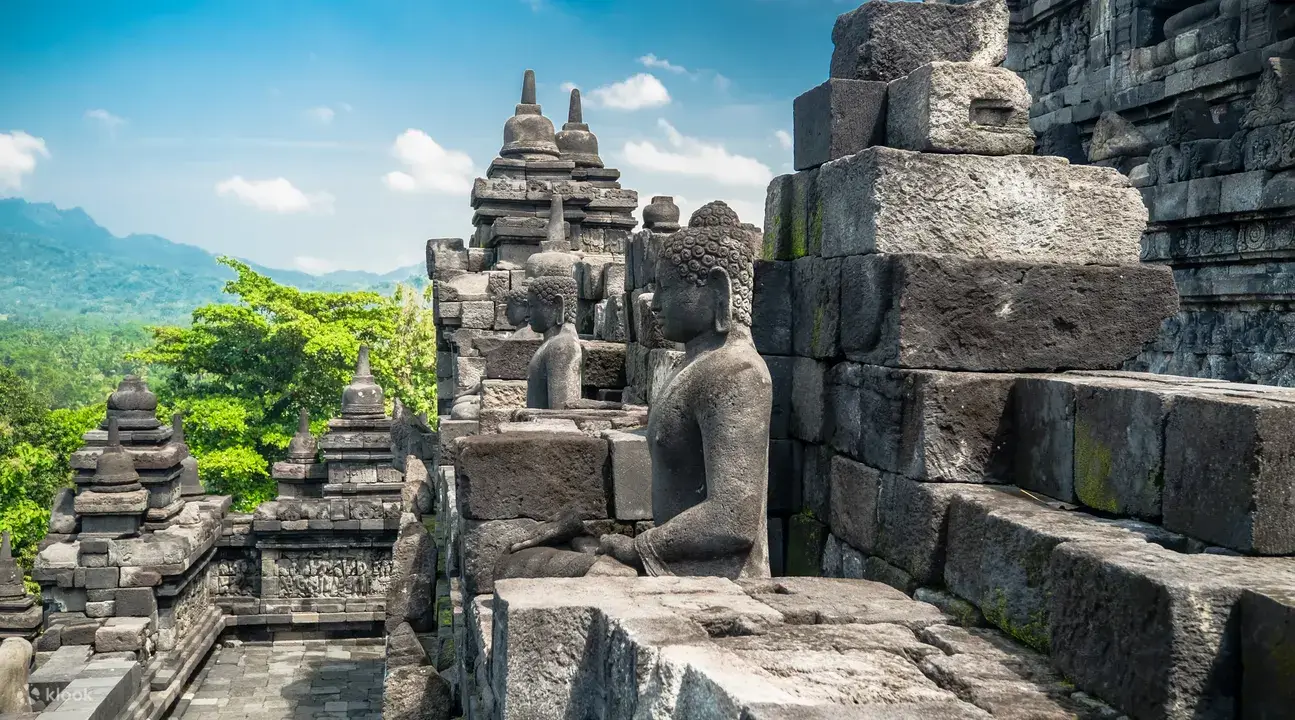
Title: Borobudur Temple
Location: Magelang, Central Java, Indonesia
Year of Construction: Estimated to be built in the 9th century
Description: Borobudur Temple is a magnificent ancient Buddhist temple located in the lush landscapes of Magelang, Central Java, Indonesia. It is one of the most significant cultural and religious landmarks in Southeast Asia, attracting thousands of visitors and pilgrims each year.
Architectural Marvel: The temple is a marvel of ancient architecture and engineering, constructed without the use of any cement or adhesive. It is built on a hill and consists of nine stacked platforms, featuring a central stupa at the top. The structure is adorned with over 2,600 intricate relief panels and 504 Buddha statues, all of which are masterfully carved.
Spiritual Significance: Borobudur Temple holds deep spiritual significance as it represents the Buddhist cosmology. The temple's design symbolizes the path to enlightenment, with the lower levels representing the world of desires and suffering, and the upper levels symbolizing the realms of knowledge and liberation.
Three Circular Platforms: The temple's base comprises three circular platforms, each representing different stages of human life - Kamadhatu (the world of desire), Rupadhatu (the world of forms), and Arupadhatu (the world of formlessness). Pilgrims traditionally walk clockwise around these platforms as a symbolic act of spiritual journeying.
Detailed Relief Panels: The walls of Borobudur Temple are adorned with intricately carved relief panels that tell stories from Buddhist scriptures. These panels serve as a visual representation of Buddhist teachings and are a testament to the artistic and storytelling abilities of ancient Javanese craftsmen.
Sunrise and Sunset Views: The temple's location atop a hill offers breathtaking views of the surrounding landscape, especially during sunrise and sunset. Many visitors ascend the temple before dawn to witness the magical sight of the sun rising over the horizon, creating a mystical atmosphere.
Restoration and Preservation: Over the years, Borobudur Temple has undergone several restoration efforts to protect it from natural disasters and human impact. The Indonesian government, along with UNESCO, has played a crucial role in preserving this cultural heritage site for future generations.
World Heritage Site: In recognition of its cultural and historical significance, Borobudur Temple was designated as a UNESCO World Heritage Site in 1991, further enhancing its global significance and promoting tourism in the region.
Religious Ceremonies: Borobudur Temple remains an active place of worship for Buddhists, who gather here for special religious ceremonies and festivals, such as Vesak, to commemorate the birth, enlightenment, and death of Lord Buddha.
Tourist Attraction: The temple's grandeur and spiritual ambiance make it a popular tourist destination, drawing travelers from all over the world who come to marvel at its beauty and immerse themselves in its spiritual aura.
Conclusion: Borobudur Temple stands as an exceptional testament to ancient engineering, artistic skill, and spiritual devotion. As a place of profound significance for Buddhists and an architectural masterpiece for all, it continues to captivate the hearts and minds of visitors, offering a glimpse into Indonesia's rich cultural heritage and the wisdom of ancient civilizations.
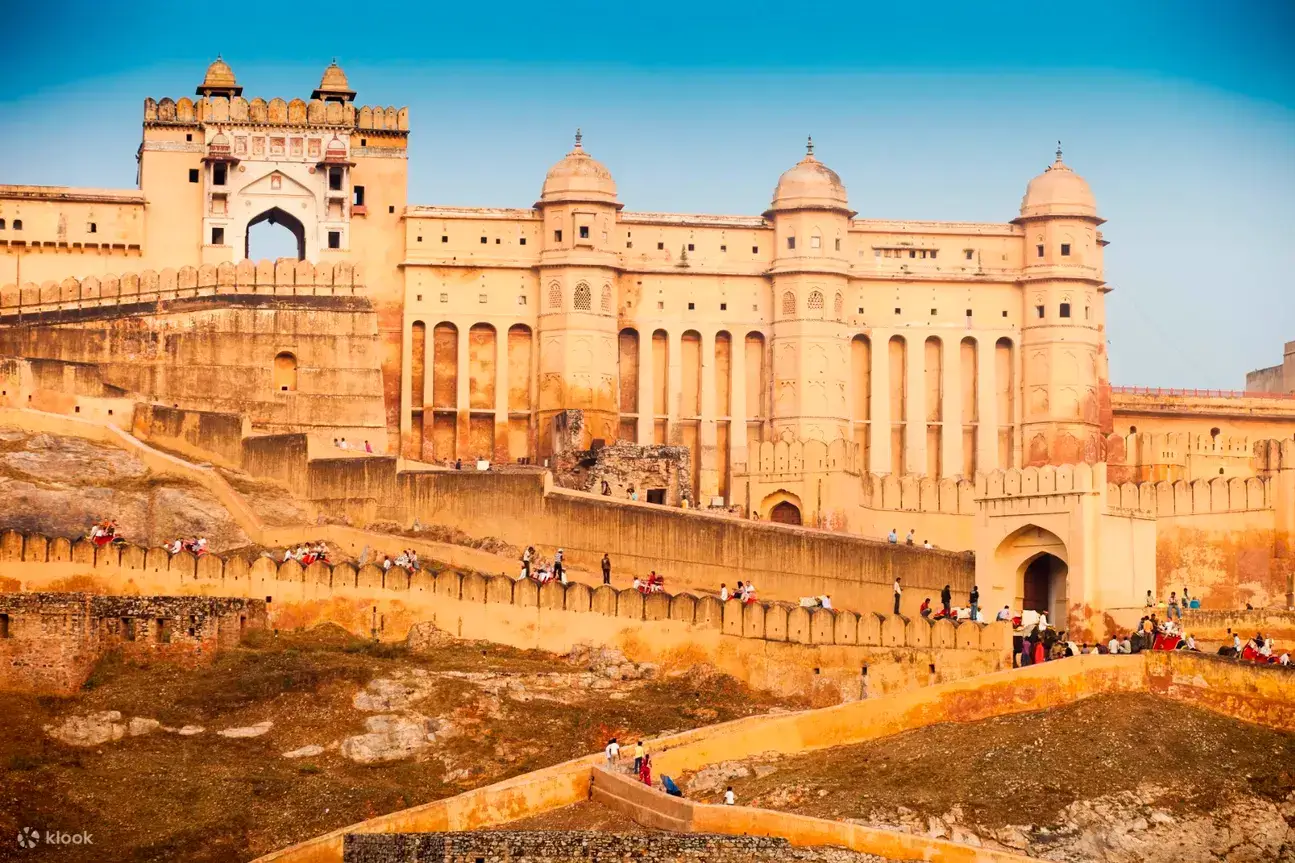
Title: Amber Palace
Location: Jaipur, Rajasthan, India
Year of Construction: Late 16th century
Description: Amber Palace, also known as Amer Fort, is a majestic historical fortress situated in the picturesque city of Jaipur, Rajasthan, India. This splendid architectural marvel is renowned for its grandeur, intricate craftsmanship, and panoramic views of the surrounding landscape.
Rajput Architecture: Amber Palace exemplifies the exquisite Rajput architecture, characterized by its elaborate frescoes, delicate mirror work, and ornate marble carvings. The fusion of Hindu and Mughal design elements is evident in the blend of red sandstone and white marble used throughout the palace.
Strategic Location: The fort is strategically positioned on a hilltop, offering both a strategic advantage for defense and a captivating view of the Maota Lake and the rugged Aravalli Hills.
Sheesh Mahal: The Sheesh Mahal, or Mirror Palace, is one of the main attractions within the complex. Its walls and ceilings are adorned with intricate mirror work, creating a stunning display of reflections when illuminated by candlelight.
Diwan-e-Khas: The Diwan-e-Khas, or Hall of Private Audience, is a lavishly decorated hall where the Maharaja would hold private meetings with his ministers. Its central pillar showcases impressive sculptures and marble inlays.
Ganesh Pol: One of the most iconic gateways in the palace is the Ganesh Pol, adorned with beautiful frescoes and sculptures. It is named after the Hindu deity Lord Ganesh and serves as the entrance to the private palaces of the royal family.
Sukh Niwas: The Sukh Niwas, or Hall of Pleasure, is known for its innovative ventilation system, which circulates cool air through its water channels, providing relief during hot summers.
Light and Sound Show: Amber Palace hosts a mesmerizing light and sound show in the evenings, narrating the history and legends associated with the fort, creating a captivating experience for visitors.
Elephant Rides: To reach the entrance of Amber Palace, visitors can opt for a traditional elephant ride, adding an enchanting touch of regality to their experience.
UNESCO World Heritage Site: In recognition of its architectural significance and historical importance, Amber Palace was designated as a UNESCO World Heritage Site as part of the Hill Forts of Rajasthan.
Tourist Attraction: Amber Palace is a major tourist attraction, drawing travelers from around the world who come to immerse themselves in the rich history and royal legacy of Rajasthan.
Cultural Events: The palace occasionally hosts cultural events, including dance performances and music concerts, providing a glimpse into the vibrant cultural heritage of the region.
Preservation Efforts: The Indian government and local authorities undertake regular conservation and restoration efforts to preserve the splendor and integrity of Amber Palace for generations to come.
Conclusion: Amber Palace is a captivating blend of history, architecture, and artistic brilliance, offering visitors a glimpse into the opulence and grandeur of the bygone era. With its majestic fortifications, opulent interiors, and breathtaking views, the palace continues to stand as a symbol of Rajasthan's rich cultural heritage and serves as a must-visit destination for travelers seeking a journey back in time.

Title: Summer Palace
Location: Beijing, China
Year of Construction: 1750 (Originally), 1888 (Reconstruction)
Description: The Summer Palace, known as "Yiheyuan" in Chinese, is a magnificent imperial garden and palace complex located in Beijing, China. Renowned for its stunning architecture, picturesque landscapes, and historical significance, the Summer Palace is one of the most visited and well-preserved royal gardens in the world.
Imperial Retreat: Originally built during the Qing Dynasty in 1750 as an imperial retreat, the Summer Palace was commissioned by Emperor Qianlong for his mother's 60th birthday. The garden served as a tranquil escape from the bustling Forbidden City during the hot summer months.
Design and Layout: The Summer Palace covers an area of over 290 hectares and is dominated by the tranquil Kunming Lake, surrounded by lush gardens, pavilions, bridges, and corridors. The architecture and design are heavily influenced by classical Chinese garden principles, blending harmoniously with the natural landscape.
Longevity Hill: At the northern end of the complex stands Longevity Hill, which houses a collection of historic buildings and temples. The iconic Tower of Buddhist Incense (Foxiangge) sits atop the hill, providing a commanding view of the entire garden.
Kunming Lake: The sprawling Kunming Lake is the centerpiece of the Summer Palace, offering boat rides and a peaceful setting for visitors to enjoy. The famous Seventeen-Arch Bridge elegantly spans the lake, adding to the picturesque scenery.
Marble Boat: One of the highlights of the Summer Palace is the Marble Boat, a unique pavilion situated at the lakeshore. The boat-shaped structure is made of marble and was built in the late 19th century as a symbol of stability and anti-corruption.
Long Corridor: The Long Corridor is an impressive covered walkway stretching for nearly 750 meters, adorned with thousands of colorful paintings depicting various historical and mythological scenes.
Suzhou Street: The Summer Palace also features Suzhou Street, a meticulously recreated shopping street along the banks of Kunming Lake, imitating the famous water towns of southern China.
UNESCO World Heritage Site: In 1998, the Summer Palace was designated as a UNESCO World Heritage Site in recognition of its outstanding cultural and historical significance.
Cultural Significance: Throughout its history, the Summer Palace has served as a center for art, culture, and politics. Emperors held grand ceremonies, hosted banquets, and conducted state affairs within its magnificent halls and pavilions.
Restoration and Preservation: Over the years, the Summer Palace has undergone several rounds of restoration to maintain its splendor and cultural value. The Chinese government continues to invest in the preservation and protection of this national treasure.
Tourist Attraction: Today, the Summer Palace attracts millions of tourists from around the globe, offering a delightful blend of history, architecture, and natural beauty. Visitors can explore the serene gardens, marvel at the imperial structures, and experience the timeless charm of ancient Chinese culture.
Conclusion: The Summer Palace stands as a testament to China's rich history and artistic achievements, representing the harmonious fusion of nature and architecture. With its serene lakes, stunning pavilions, and lush gardens, the palace continues to be a symbol of Beijing's cultural heritage and a place where visitors can immerse themselves in the imperial grandeur of the past.
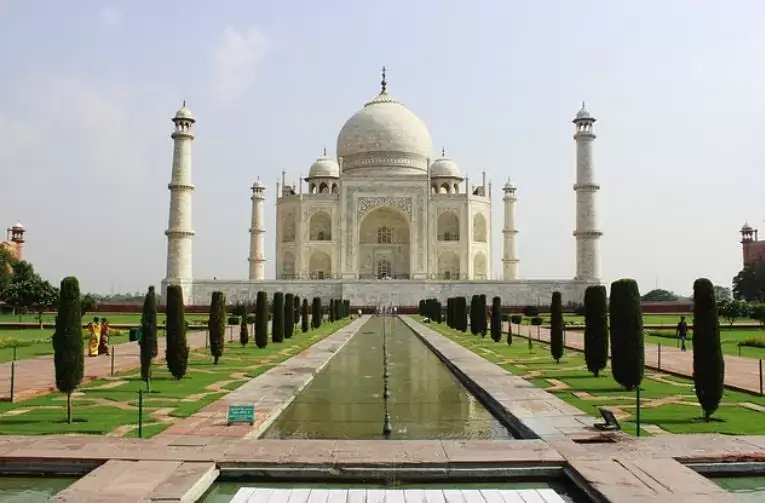
Taj Mahal - Agra, India - Height: 73 meters (including the central dome) - Completion Year: 1653 - Construction Cost: Estimated at 32 million rupees (equivalent to around $1 billion today)
Detail: The Taj Mahal is an architectural masterpiece and a symbol of eternal love, built by Emperor Shah Jahan in memory of his wife Mumtaz Mahal.
Interesting Fact: It changes color throughout the day, appearing pinkish in the morning, white during the day, and golden in the moonlight.




